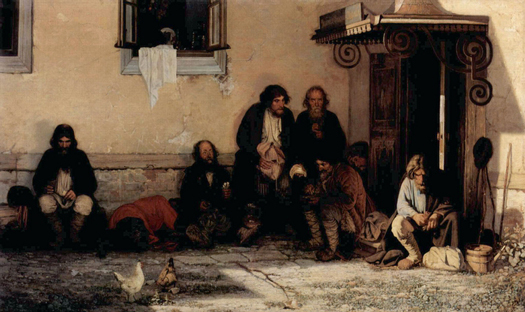For the first 3 weeks in Aug, 2024, we hear the “Bread of Life” discourse in John Chapter 6. It is a discussion led by Jesus with later responses from the people following him. The discourse uses the metaphor of bread to emphasize faith in Jesus as the Messiah and Son of God. Jesus compares himself to bread, which is essential for life, and says that he is spiritual bread that provides eternal life. It takes the people beyond the physical bread the they received in the “Feeding of the 5,000” (July 28, 2024) into something more. The discourse becomes the basis for Holy Communion. While communion was introduced as a practice during Holy Week, these passages explore the meaning.

At the beginning of the discourse, Jesus takes the crowd beyond mere food they received in the “Feeding of the 5,000”. The bread from heaven that the people ate in the wilderness met the people’s needs daily, but Jesus meets the needs of our whole lives.
The crowd the day after the “Feeding of the 5,000” finds Jesus in Capernaum where He introduces Himself as the Bread of Life, teaching that whoever comes to Him will never go hungry or thirsty, and whoever believes in Him will have eternal life. Jesus is instructing them on the importance of Holy Communion and receiving him in the bread and wind. It is not just a daily meal!
In Week 1, there is the first Bread of Life statement “Jesus said to them, “I am the bread of life. Whoever comes to me will never be hungry, and whoever believes in me will never be thirsty.”
By Week 2 Jesus expands the “Bread of life” to provide more clarification. ” I am the bread of life. Your ancestors ate the manna in the wilderness, and they died. This is the bread that comes down from heaven, so that one may eat of it and not die. I am the living bread that came down from heaven. Whoever eats of this bread will live forever; and the bread that I will give for the life of the world is my flesh.”
The people were saying, “Is not this Jesus, the son of Joseph, whose father and mother we know? How can he now say, ‘I have come down from heaven’?” The listeners knew that Jesus, by claiming to come from heaven, was declaring that he was God. He was the real Bread of Heaven—the ever-present daily Manna—the lifegiving, eternal source of provision for today, tomorrow, and all eternity.
Week 2 ended with “…the bread that I will give for the life of the world is my flesh.” which is repeated and expanded in Week 3
Then in Week 3 he starts where he ended in Week 2 by repeating verse 51. In verse 51 “Jesus said, “I am the living bread that came down from heaven. Whoever eats of this bread will live forever; and the bread that I will give for the life of the world is my flesh.”
The people’s reaction turned to revulsion when Jesus explained that he had come to give his flesh and blood—to sacrifice His life—so that the world could have eternal life. Eating flesh and drinking blood seemed an affront to the Jewish faith.
Many disciples find Jesus’ teaching hard to accept and decide to leave Him. When Jesus asks the Twelve if they want to leave too, Simon Peter in Verse 68-69 affirms their faith in Jesus as the Holy One of God. He saved the day. ” Simon Peter answered him, “Lord, to whom can we go? You have the words of eternal life. We have come to believe and know that you are the Holy One of God.”
“We are constantly relearning Jesus” (Gospel of John: A Commentary – Frederick Dale Bruner). “Sometimes Jesus removes himself from us, though he still wants us, until we learn to accept him on his own terms, as he defines himself — which self-defining is exactly what happens in the Bread Sermon that follows.”

 It is a song that speaks profoundly about being "childlike." Luke focuses his entire Christmas narrative around the person of Mary, who was probably just a child, a young girl who was perhaps twelve to fourteen years old, as it was customary for Jewish girls to marry just after puberty
It is a song that speaks profoundly about being "childlike." Luke focuses his entire Christmas narrative around the person of Mary, who was probably just a child, a young girl who was perhaps twelve to fourteen years old, as it was customary for Jewish girls to marry just after puberty 
 Twelth Sunday after Pentecost, Aug. 11
Twelth Sunday after Pentecost, Aug. 11


